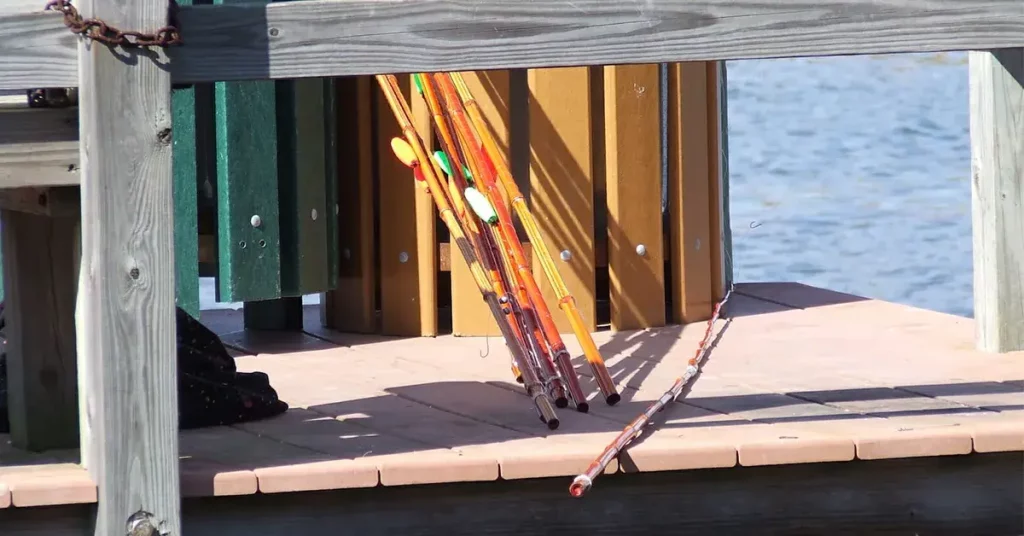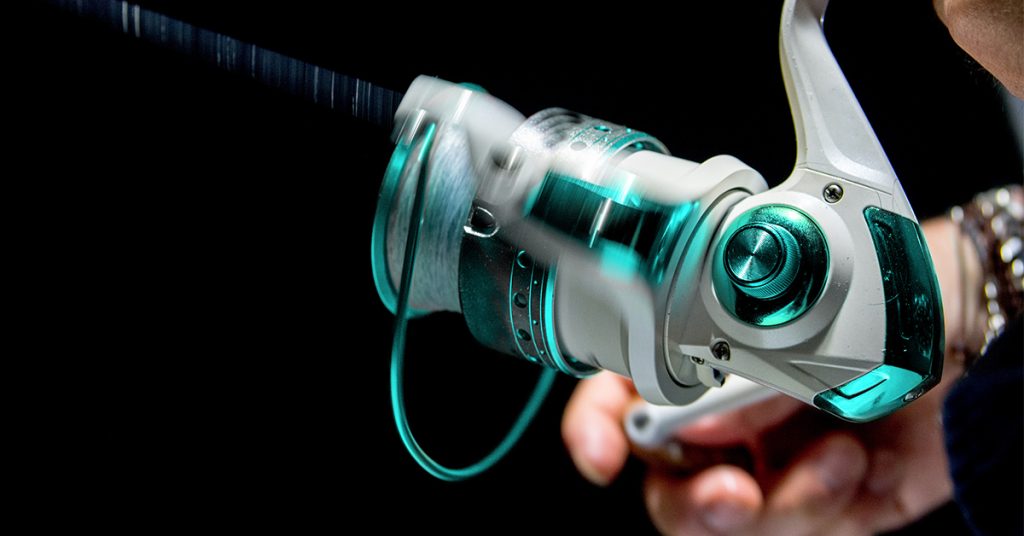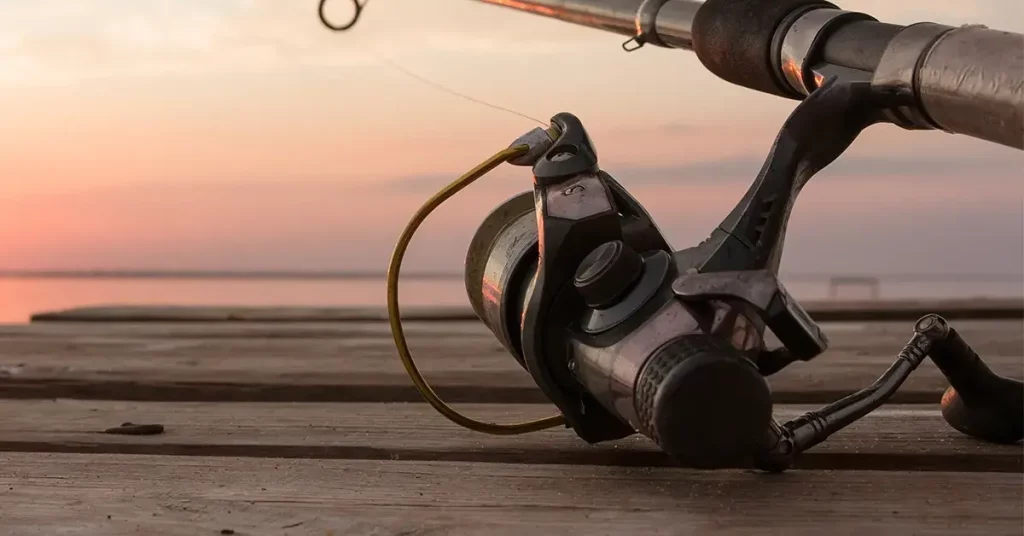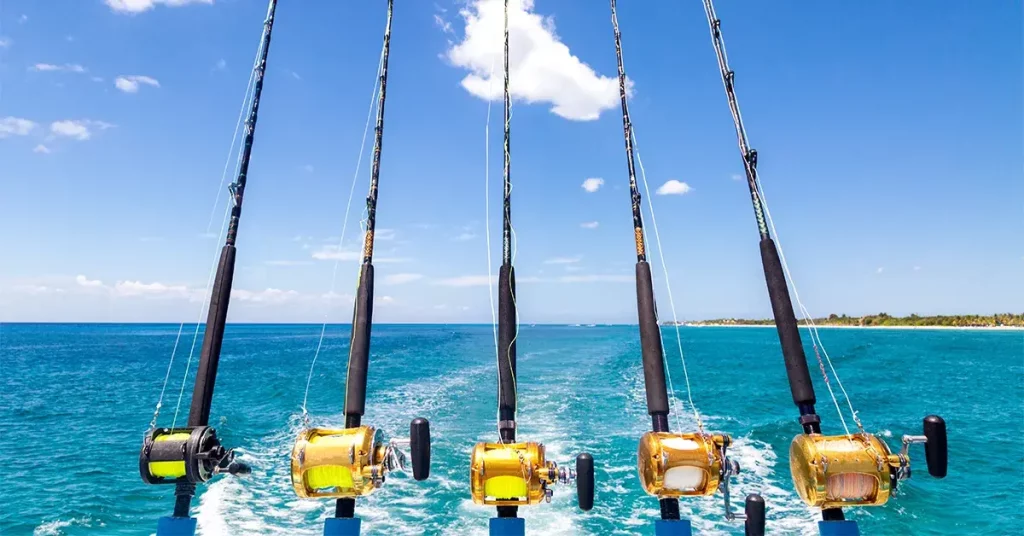If you want to get back to basics, you’ll have a hard time beating the tried and true method of cane pole fishing.
The magic of cane pole fishing is its down-home simplicity. When most people think about the topic, images of Huckleberry Fin fishing barefoot from his raft come to mind. While this may be accurate, don’t be fooled – cane poles can be highly effective, and even have several advantages over modern spinning and baitcasting setups.
Cane pole fishing dates all the way back to the ancient Egyptians, who used silk and fiber cordage as line, and bone for hooks. Other than these materials, not much has changed in the past 4000 years or so!
All you need to get started is a length of bamboo, line, and a hook – no graphite, fiberglass, or high-end composites needed! Let’s dive into this often-overlooked fishing method in detail.
What is a Cane Pole?

Simply put, a cane pole is a length of pole – often bamboo, although other materials like graphite and fiberglass are also available – used for basic stillwater fishing.
A typical cane pole setup will use an 8 to 12 foot length of bamboo, a similar length of mono line tied to the end of the pole, and a hook with bait tied to the end of it. A bobber or float of some kind, and a weight are also commonly used.
Because cane poles don’t have a method for casting with, the bait is simply dropped into the water for the fish to find. This type of fishing is commonly called ‘stillfishing’ or ‘stillwater’ fishing due to the lack of continuous line movement you’d find in cast-and-retrieve fishing.
This is the simplest and most minimalist style of fishing out there, which makes it great for kids, first-timers, and folks who prefer not to fuss around with too much fishing gear. It also works great in survival fishing scenarios, where you can fashion your own pole from scratch.
Cane Pole Fishing Pros and Cons
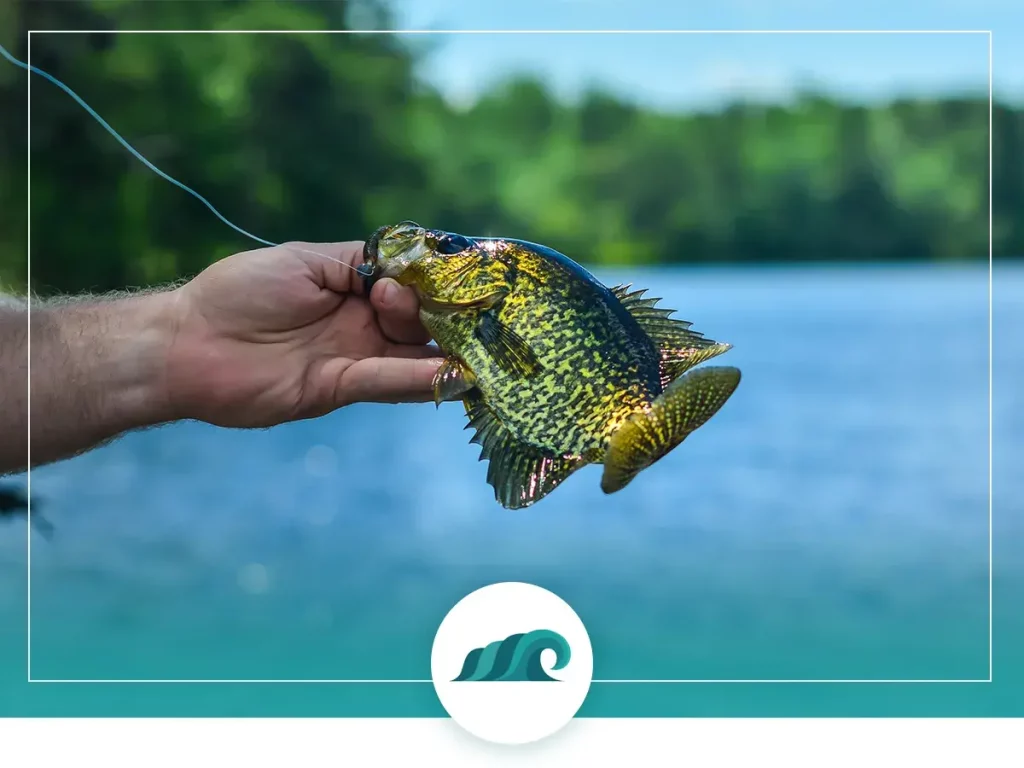
While it may come as a surprise to many people, cane poles offer some distinct advantages over more modern fishing methods.
Besides their nostalgia and old-timey aesthetic, cane poles offer a high degree of accuracy when dropping your bait into cover. This works especially well when fishing in areas with thick cover, like underneath low-hanging trees, or in areas between weeds and lilypads.
Unlike casting, which can result in snags and headaches, being able to drop your bait precisely where you want it can be a major plus.
Another advantage over casting rods is the space needed to get your bait in the water. If you’re fishing from a densely wooded area with limited space, you may not have the space needed to cast properly. A cane pole can come in handy here.
Lastly, cane poles are easy on the wallet. Because you’ll need far less line than you would with a casting reel – a little line will go a long way. Additionally, bamboo poles are dirt cheap, and can even be fashioned yourself with a little DIY.
Obviously, cane poles aren’t ideal for every scenario. They’re best used for small to medium sized freshwater fish like perch, crappie, bass and smaller catfish. If you’re after larger fish like northern pike, muskie, or big cats, a traditional setup will work best.
Cane Pole Types
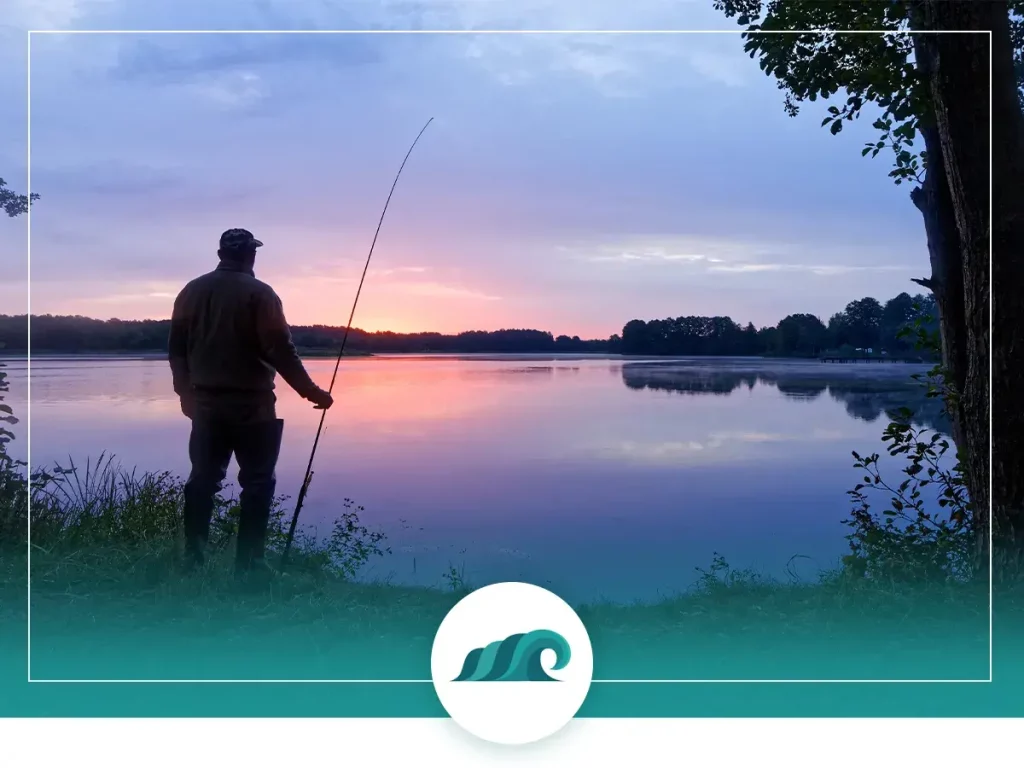
While the traditional bamboo pole is undoubtedly the most common type of cane pole, there are a few different variations that merit a closer look.
Bamboo Cane Poles
The classic bamboo cane pole is made from a solid piece of thick-walled bamboo. Lengths vary from 8 to 20+ feet long, but most are between 8 and 12 feet long.
It’s cut into the desired length and then treated with some form of anti-fungus and anti-insect treatment. Because bamboo is an organic material, it will naturally decay over time, and is vulnerable to biological degrading organisms. Some form of treatment will prolong the bamboo’s lifespan, and prevent termites and beetles from destroying it.
Common treatments include prolonged soaking in water, smoking, and borax / boric acid treatment.
Bamboo is tough, durable, and will last for many years if treated properly. It’s not indestructible though, and can snap under heavy stress or if mistreated.
Jigger Poles
Fishing with jigger poles is an old-school method of pole fishing for bass. This pole style dates all the way back to the 14th century, making it perhaps the oldest known method of catching bass with an artificial lure. While it’s old, it’s still one of the most productive ways of catching bass in cover and murky water.
Jigger poles are long (often 15 -20 feet or longer), flexible, and work well in areas that are hard to reach by casting. They’re rigged with a short 6 -12” leader tied directly to the pole end with a plastic or wood plug fixed to the end.
The method involves sitting in a small boat close to the water, and working the areas near cover by softly bouncing the jigger pole so your plug stays slightly submerged. The ideal method involves two people. One paddles or operates the trolling motor while the other slowly works the jigger pole along standing timber, logs, weeds and other cover.
Jigger poles can be telescopic or one-piece and can be made from bamboo, or newer materials like fiberglass or graphite.
Check out this video for a close up look at jigger pole fishing:
Telescopic Poles
Telescopic poles are a great option when portability is a major concern.
If you’re going backpacking or camping, a one-piece 12 foot cane pole can be a major pain to transport. Enter the telescoping pole. These poles are usually made from newer materials like fiberglass and graphite, making them both compact and lightweight.
Most of these poles are on the cheaper side, making them great options for throwing in your backpack or trunk for when the opportunity to do some fishing presents itself.
How to Rig a Cane Pole
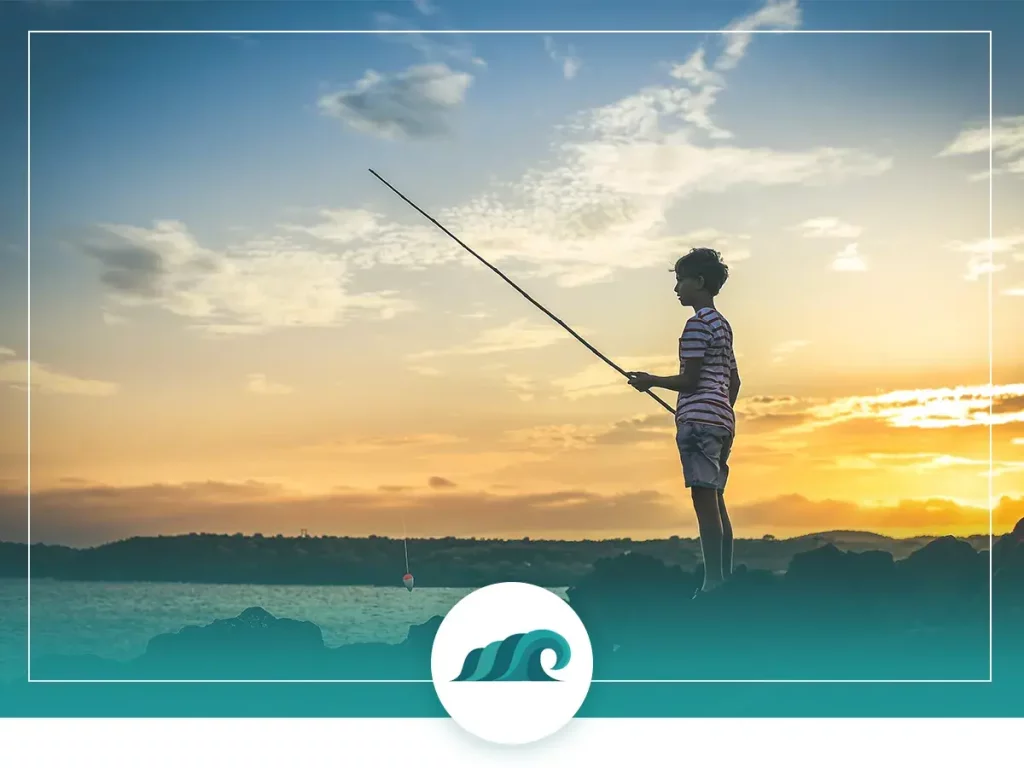
Rigging a cane pole is a little different that rigging a typical casting rod. Because there’s no reel to speak of, rigging a cane pole is a much simpler process.
Rather than tying your line directly to the pole’s tip, it’s best to attach your line lower down the body of the pole. This prevents you from losing your line, tackle, and fish should the tip break under pressure.
Start by anchoring your monofilament line about halfway down the pole using an arbor knot. Mono works better than braided line due to its flex and shock absorbing capability. Some anglers like to use Dacron line for this portion, but if you don’t have that, 10 – 12 lb test mono will work as well.
A good place to tie the knot is directly behind one of the bamboo knuckles. Next, simply wrap the line around the pole in one inch increments until you reach the tip.
This has two functions, firstly, it reduces the stress on the pole tip by reinforcing the pole’s integrity, and secondly, it spreads the pressure over a larger surface area, which will help to prevent your line from breaking.
At this point, you’ll tie another anchor knot at the tip end. Lastly, measure approximately the same length of line as the pole’s length (some people like to add an extra 2- 3 feet) and cut the line. Then add your hook, bobber, and weight and you’re ready to go!
Rigging a Telescoping Pole
Rigging a telescoping pole is similar to rigging a bamboo rod, but because most telescoping rods are made from fiberglass/graphite, there’s less concern for the tip breaking under stress.
This means you can tie your line directly below the rod tip, and run the line through the eyelet attached to the rod tip.
How to Fish with a Cane Pole
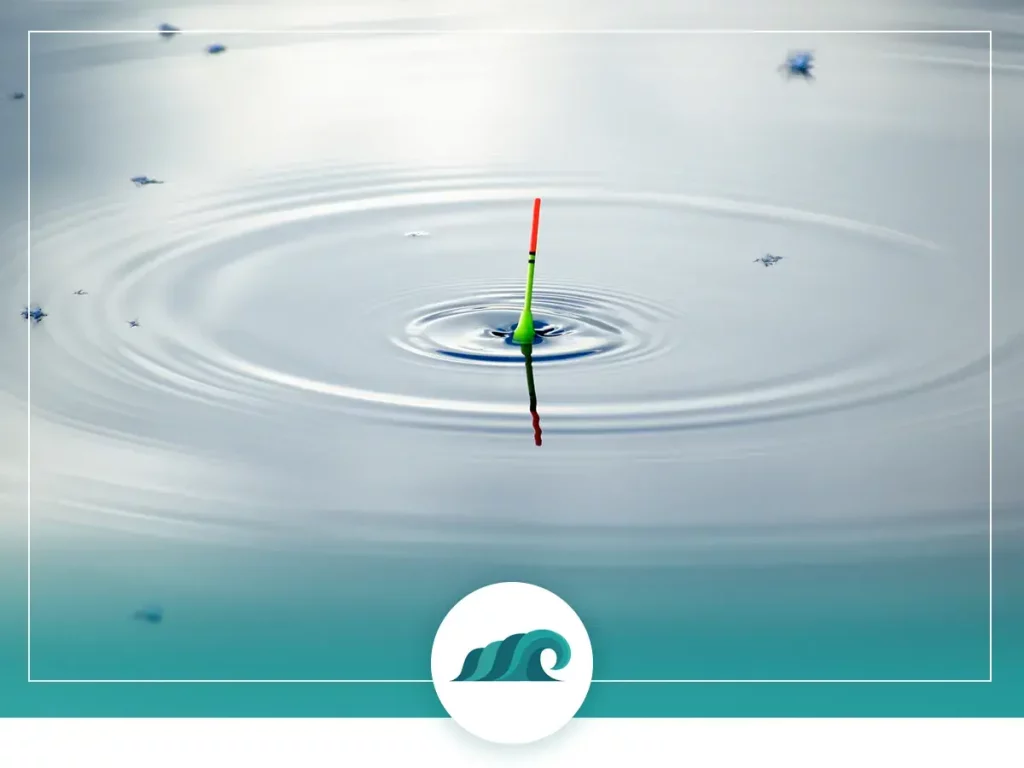
Fishing with a cane pole is one of the simplest and most relaxing ways to catch fish. Forget about reels, casting, snags and bird’s nests – all you need to do is drop your line in a good spot and wait for the fish to start biting!
The technique itself is fairly straightforward. Simply drop your line into the water by dipping the rod gently downwards and then lifting up gently. The goal is to give the bait or lure some natural momentum, but not move it around too violently or rapidly.
Once you’ve hooked a fish, the next step is landing it. As long as your line is the approximately the same length as your pole, then lifting your pole up above your head should bring the fish close to the bank, kayak, or boat. Then it’s simply a matter of grabbing the fish by hand or with a net and removing the hook.
If you’re fishing in a river or stream, you can simply drop your bait in the water and let the current carry it around – similar to fly fishing.
Cane Pole Techniques for Different Fish Species
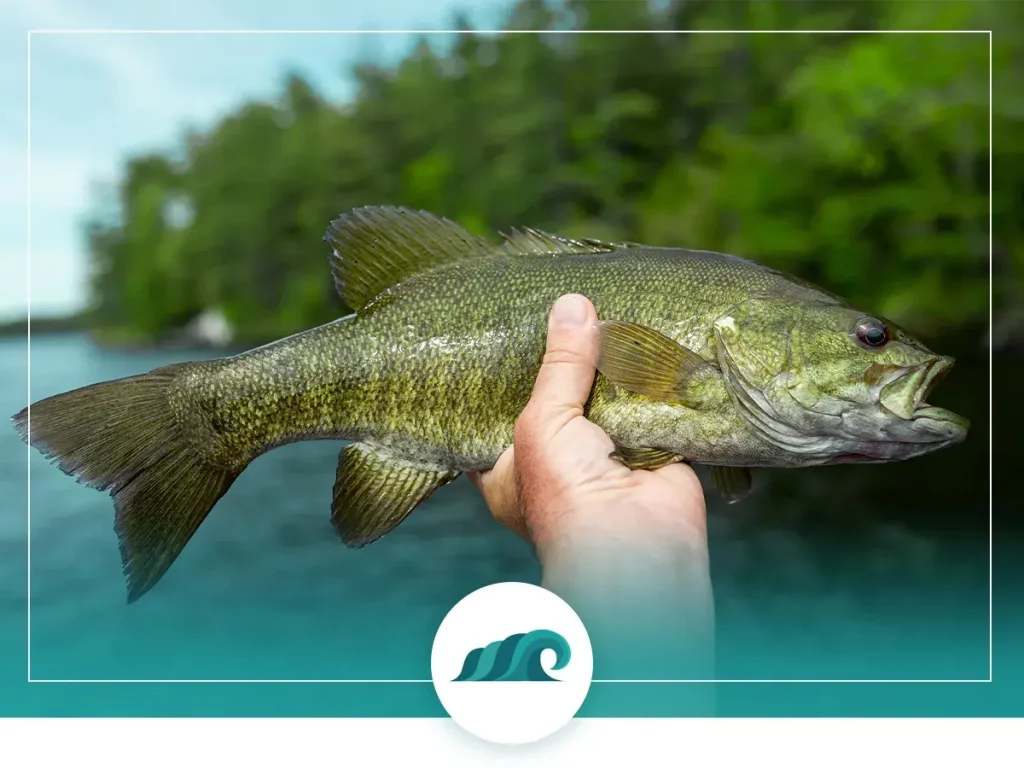
While a cane pole can work well for a variety of fish, there are a few tweaks you can make to tailor your setup for targeting specific species.
Bass
As mentioned previously, jigger poling can be deadly effective when going after bass in cover and stained water. Using a slightly longer cane pole with a short leader tied directly to the tip enables you to get into those hard to reach spots that traditional rods and reels just can’t access.
Pair the pole with a large hard plastic plug, and you’ve got a perfect setup for enticing big bass to bite. This setup tends to attract larger bass, as the plug behaviour tends to scare away smaller fish.
The key to the technique is to really work the pole in areas near cover. Bass often won’t bite until their agitated, so three or four passes over the area may be necessary.
Trout
Catching trout with a cane pole is a little trickier than other fish, but it’s still doable.
It can be a particularly useful method when trout fishing in areas with overgrown vegetation preventing you from effectively casting a fly rod or spinner.
A good trout setup uses a shorter 8 – 10 foot cane pole paired with an equivalent length of light 4 pound mono line. Attach a small fly to the end of the line and then head upstream to the mouth of the stream or pool.
The technique involves stealthily dangling the fly two or three inches above the surface and occasionally touching the surface in the same manner as an actual fly. If you do this right, any trout in the area will become excited and eventually burst out of the water attacking your fly!
Catfish
Targeting catfish with a cane pole can be highly effective, and presents a fun and unique challenge. Going with a slightly heavier line is a good idea, as you never know when you’ll hook that monster cat! Make sure to anchor your line closer to the base of the pole, as a heavy channel cat can really test your pole and even snap off the tip.
Crappie & Bluegill
Panfish like crappie and bluegill make ideal targets for cane pole fishing. Many anglers fondly remember catching their first panfish on simple bamboo cane poles.
While they’re fairly easy to catch in general, a cane pole allows you to get your bait into those hard to reach spots near heavy cover that crappie and bluegill love.
Fishing from shore is also much easier with a cane pole, especially if there’s a patch of heavy vegetation between you and the water’s edge.
How to Build Your Own Cane Pole

Fashioning a cane pole from scratch has been a rite of passage for young anglers going back generations.
If you want to build your own fishing cane pole, you’ll need to find a sturdy piece of bamboo, approximately 10 to 20 feet long. Longer poles will increase your reach, but can become a bit unwieldy. If you’re making the pole for a kid, going with a shorter pole will make it easier for them to handle.
How to build a cane pole step-by-step:
- Cut a bamboo stalk near the base, right below the knuckle closest to the dirt. Trim off any small branches attached to the stalk with your knife or machete. Make sure not to cut into the stalk itself while you’re doing this.
- Cut the tip of the stalk right above the last knuckle. This will create a strong tip to attach your fishing line to.
- Next, you’ll want to cure the stalk for several weeks. This will ensure the bamboo is completely dried, and will last for the long term. Hang the stalk in a dry place until it dries from green to a solid tan color.
- Sand the base and remainder of the pole to remove any blemishes. If you want to make it pretty, apply a coat or two of wood lacquer.
- Rig up your pole and go catch some fish!

